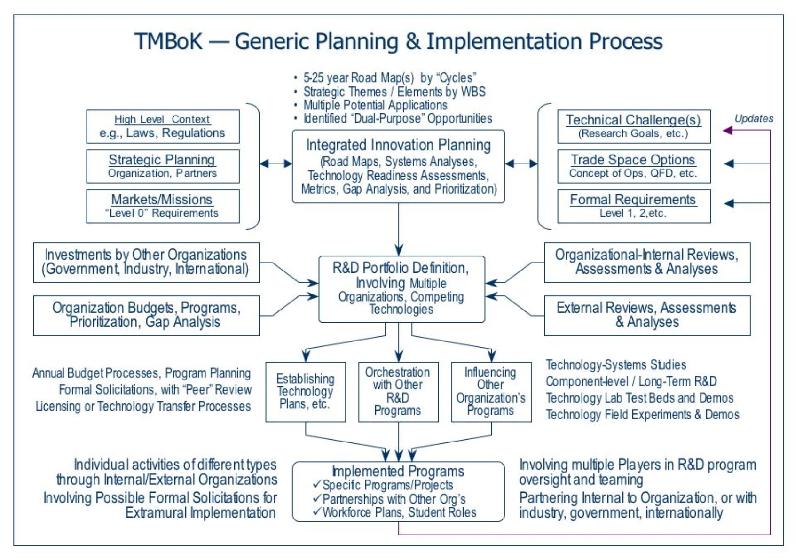TMBoK — the Technology Management Body of Knowledge
|
Innovation
continues to be a key determinant of the success or failure of
organizations - and technology development continues to be the single
most important type of innovation for most government agencies and
firms. During the past two decades, the information technology (IT)
industry has emerged as a powerful driver for standards, best
practices, and formal, certification-oriented training in the
management of programs and projects of all sizes.
Surprisingly,
in other areas of technology different organizations today continue to
manage R&D efforts in widely varying ways. This is true of
innovation programs within government agencies, companies large and
small, or universities.
In
many situations, variations in management practices are explained as
being due to differences in the objectives of the R&D program being
managed. And, sometimes this explanation has some legitimacy; it is
unlikely, after all, that one should use exactly the same practices for
managing fundamental level-of-effort research that one would use for a
major, schedule-driven systems-technology demonstration project.
However,
across various organizations and R&D programs, a number of similar
tools and methodologies have been employed to improve the overall
quality of management of - and the outcomes resulting from - innovation
investments. These have varied from fairly loose processes for more
‘research discipline push’ investments to far more structured methods
for more focused technology development investments. However, as is
true in the case of program and project management, it is still
possible to define for more general technology management a set of best practices that - if used as a reference point-of-departure - can
enable many organizations to manage more effectively there innovation
investments.
The attached white paper (TO BE PROVIDED - circa Summer 2009
provides an initial concept for a coherent end-to-end architecture for
defining and using a specific set of technology R&D management
tools and methods - the Technology Management Body of Knowledge (TMBoK).
The emphasis is on technology R&D investments that are tightly
focused on a series of specific future systems developments and
applications. The figure below provides a high-level summary of the
annual process that frames the TMBoK architecture.
|
 |
| Typical TMBoK Planning & Implementation Cycle |
|
|
Successful
technology management must be highly adaptive to changing events and
circumstances, and resilient in the face of the unexpected.
Nevertheless, a clear framework for critical processes is essential to
cost-effective innovation management.
TMBoK
provides an end-to-end approach for innovation R&D planning and
implementation, ranging from preliminary conceptual studies, through
more consistent assessments of technology maturity and risk, and to an
improved understanding and management of the technology
uncertainty-related differences among advanced technology systems
alternatives.
Of course, it is planned that TMBoK will be a ‘living’ body of knowledge—evolving and growing over time. Please contact us: comments are welcome on this initial architectural concept or on other related topics.
|
|